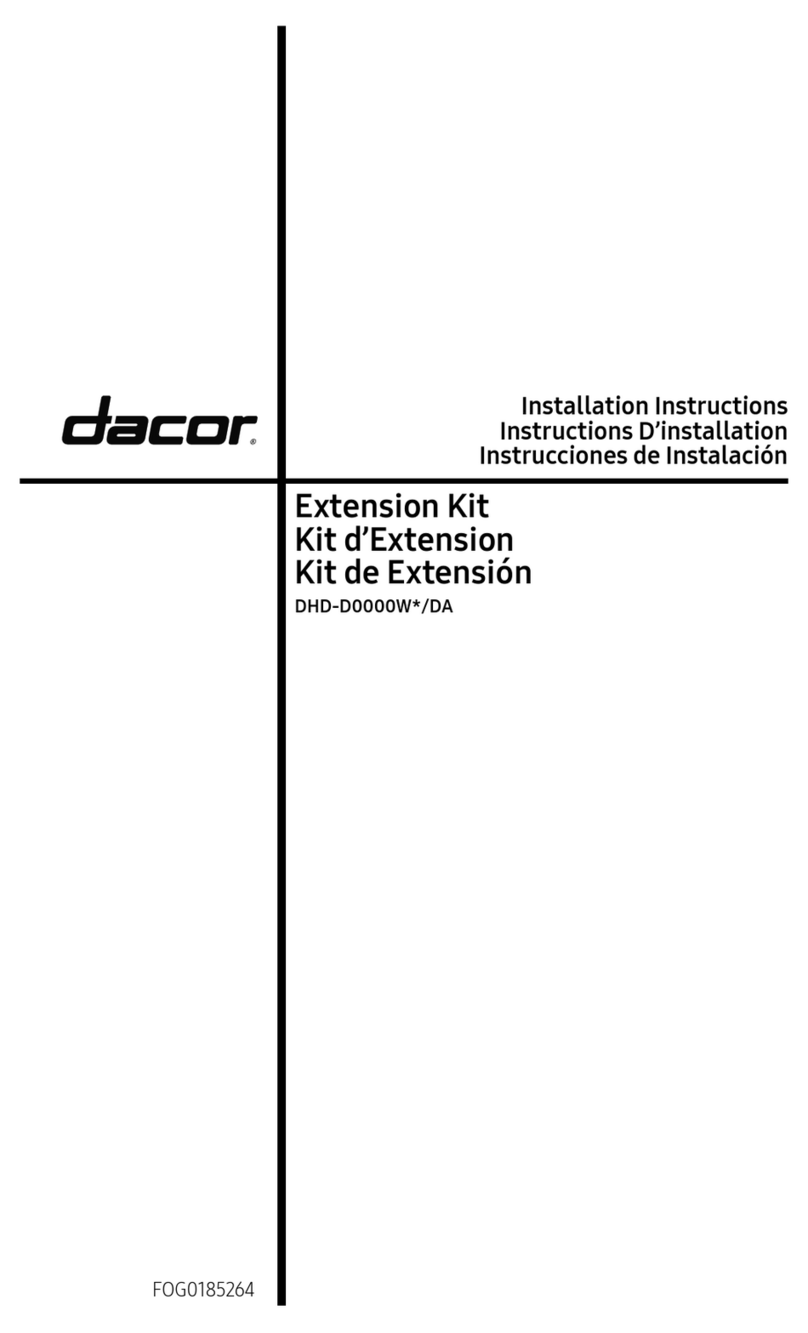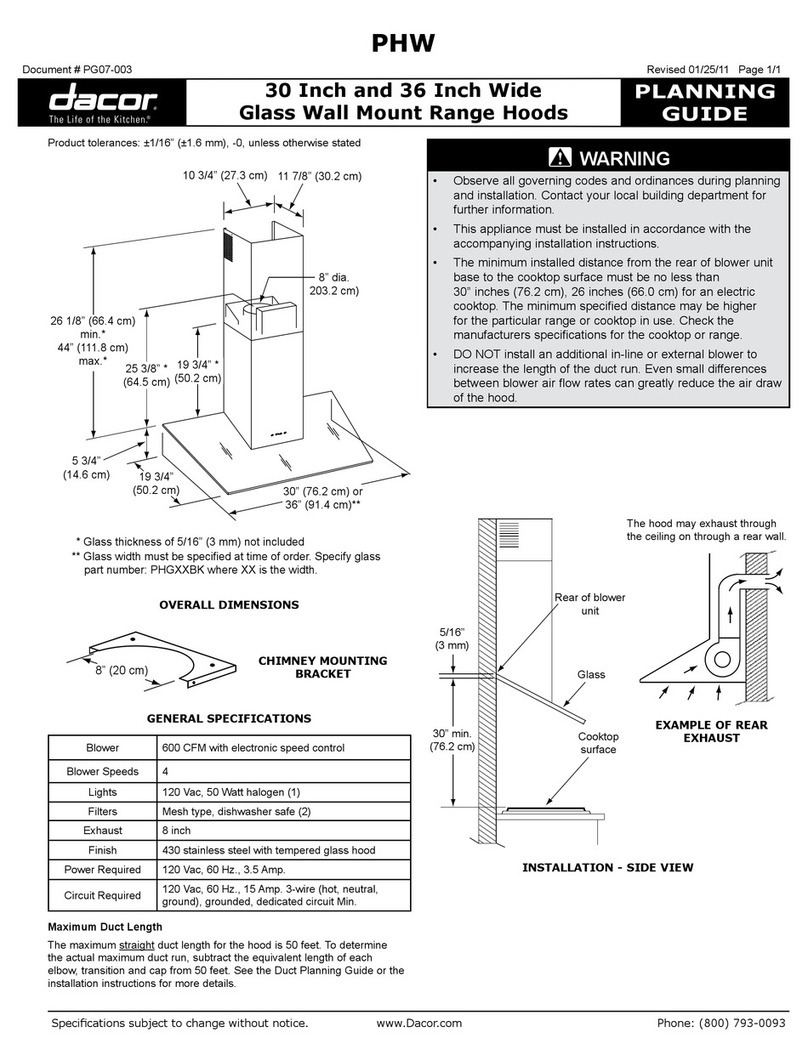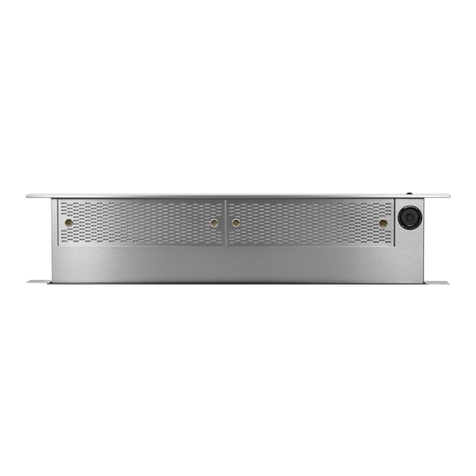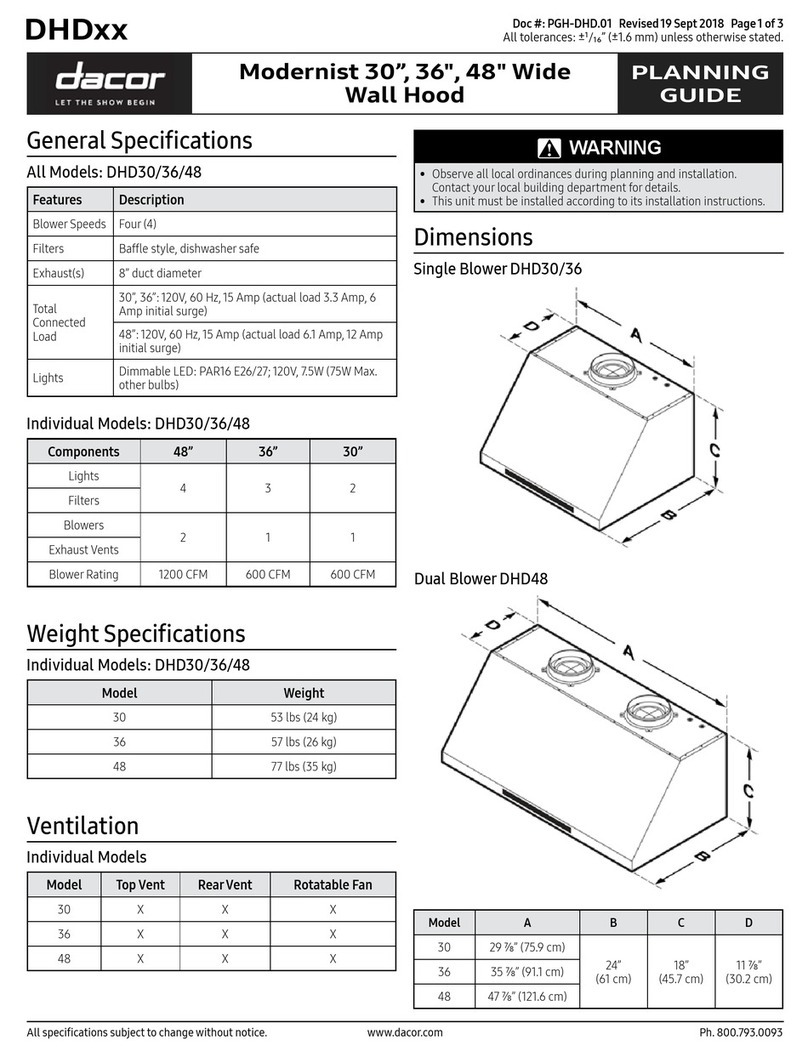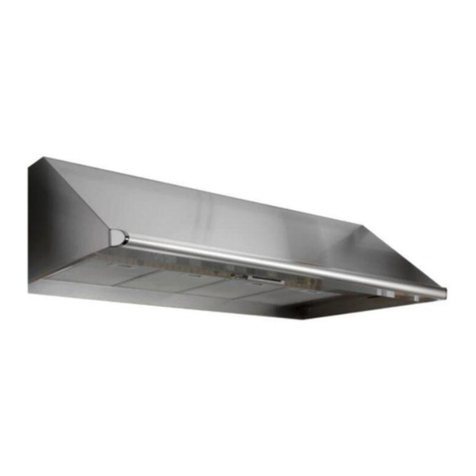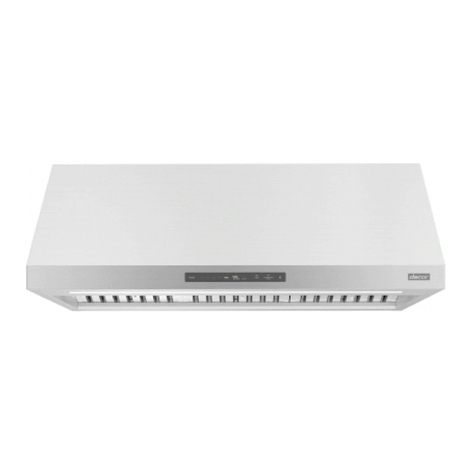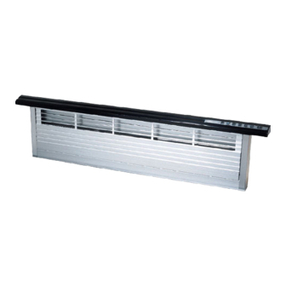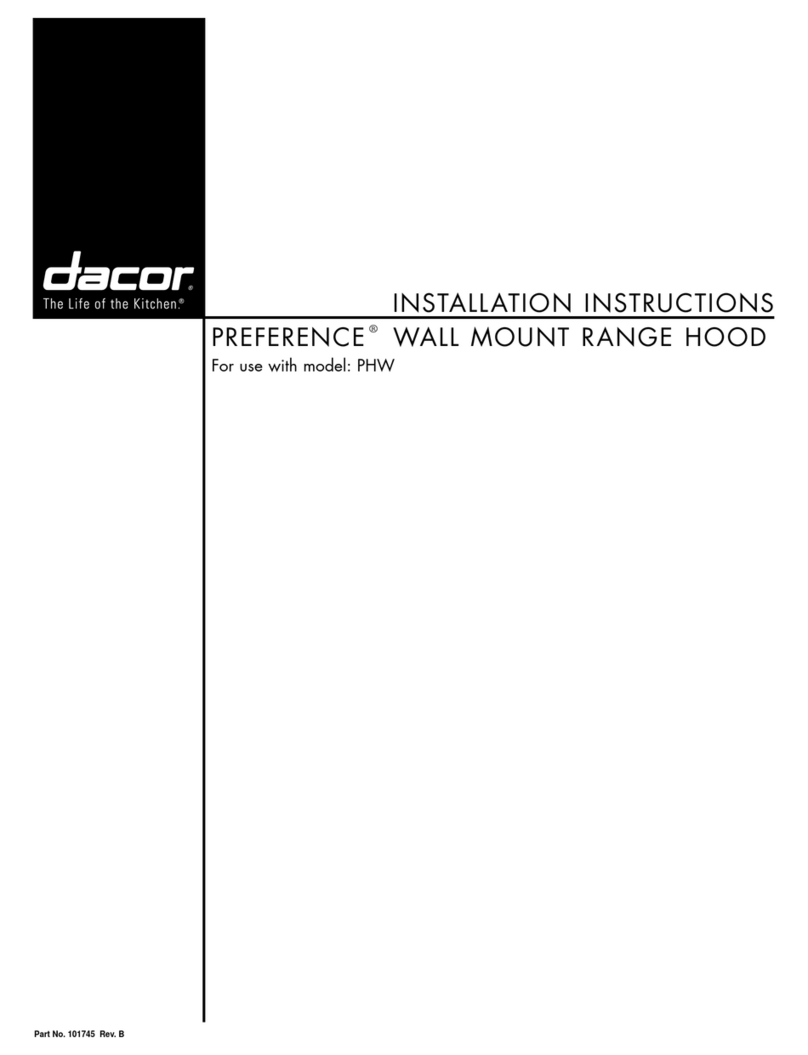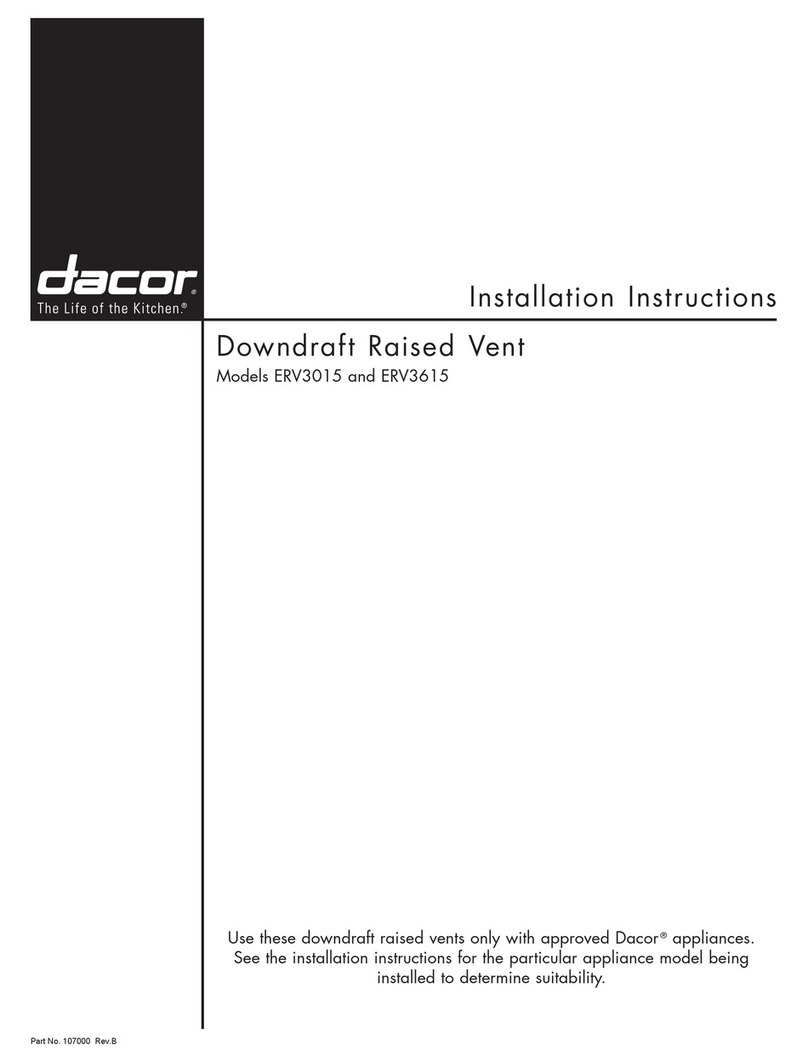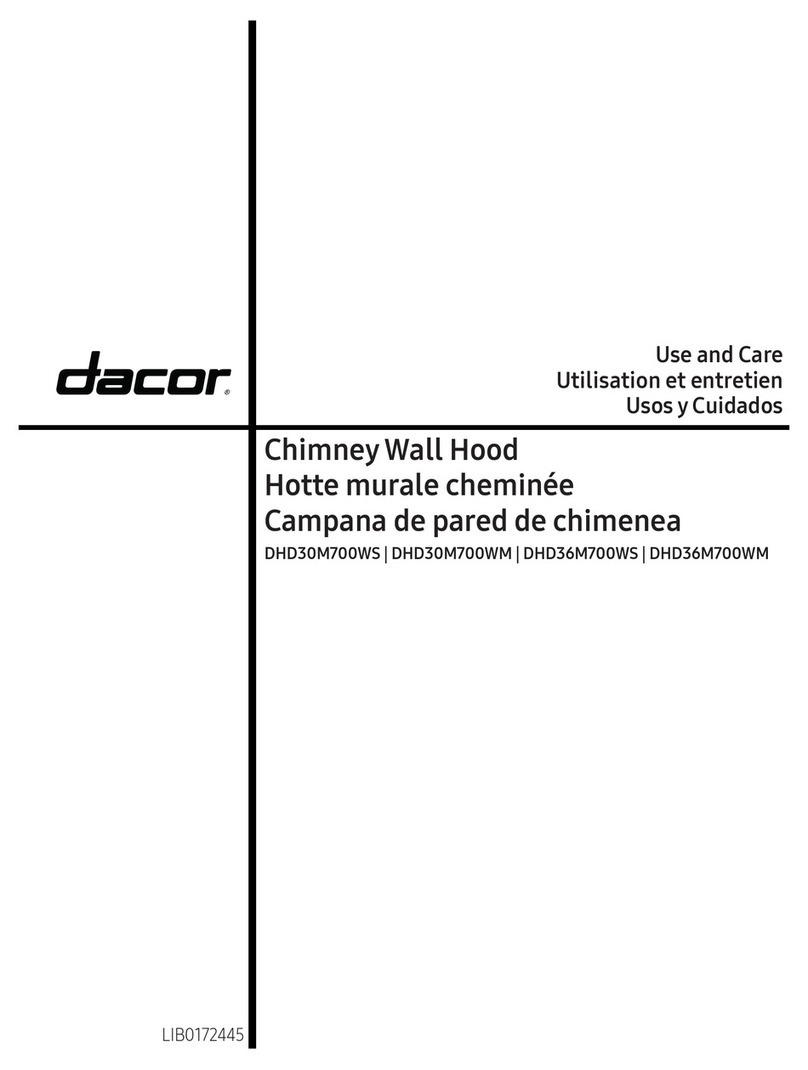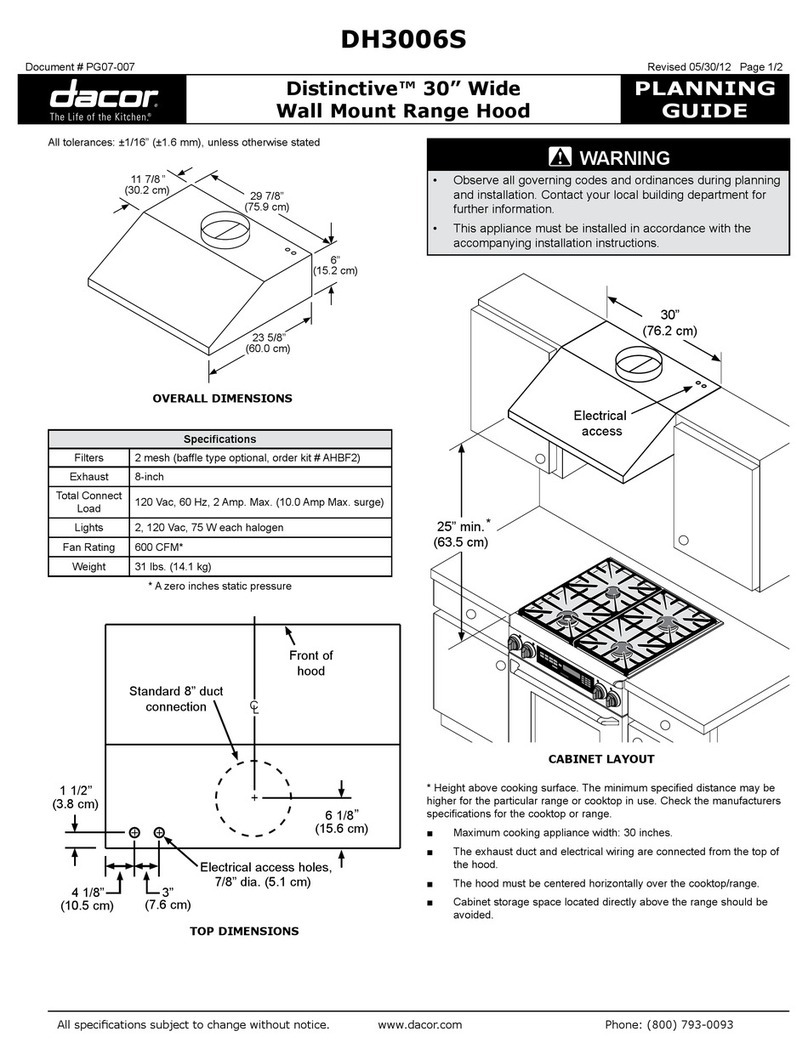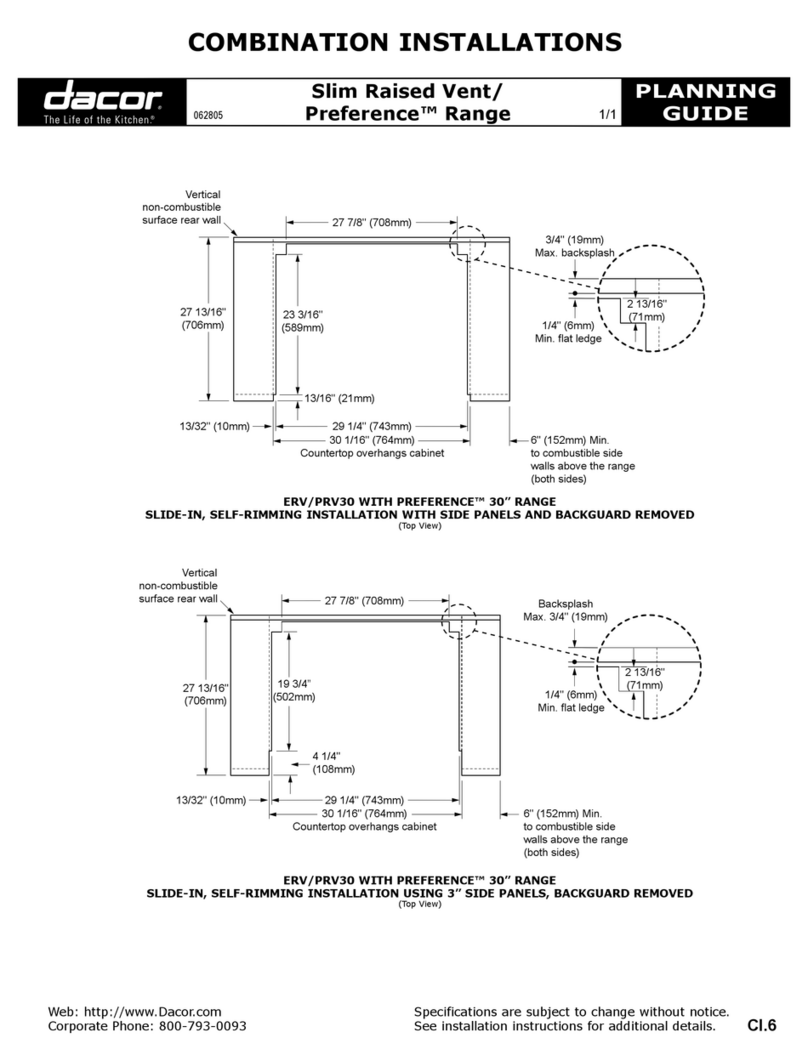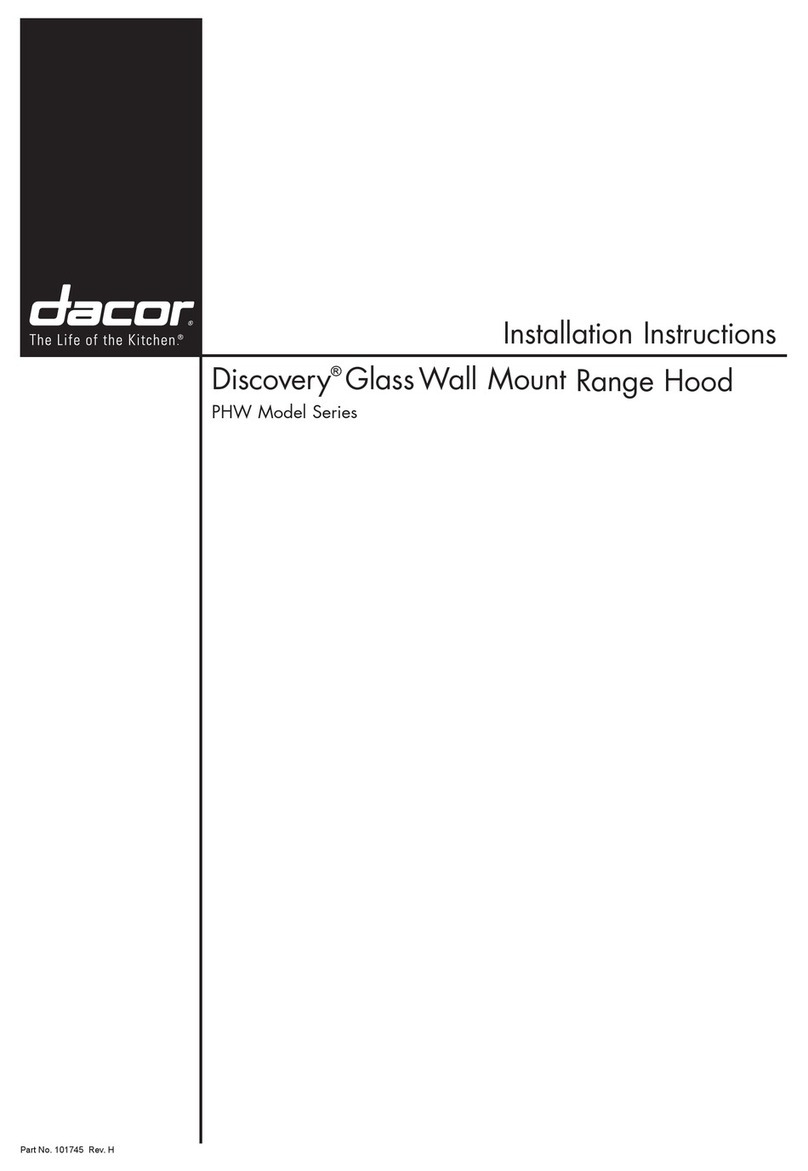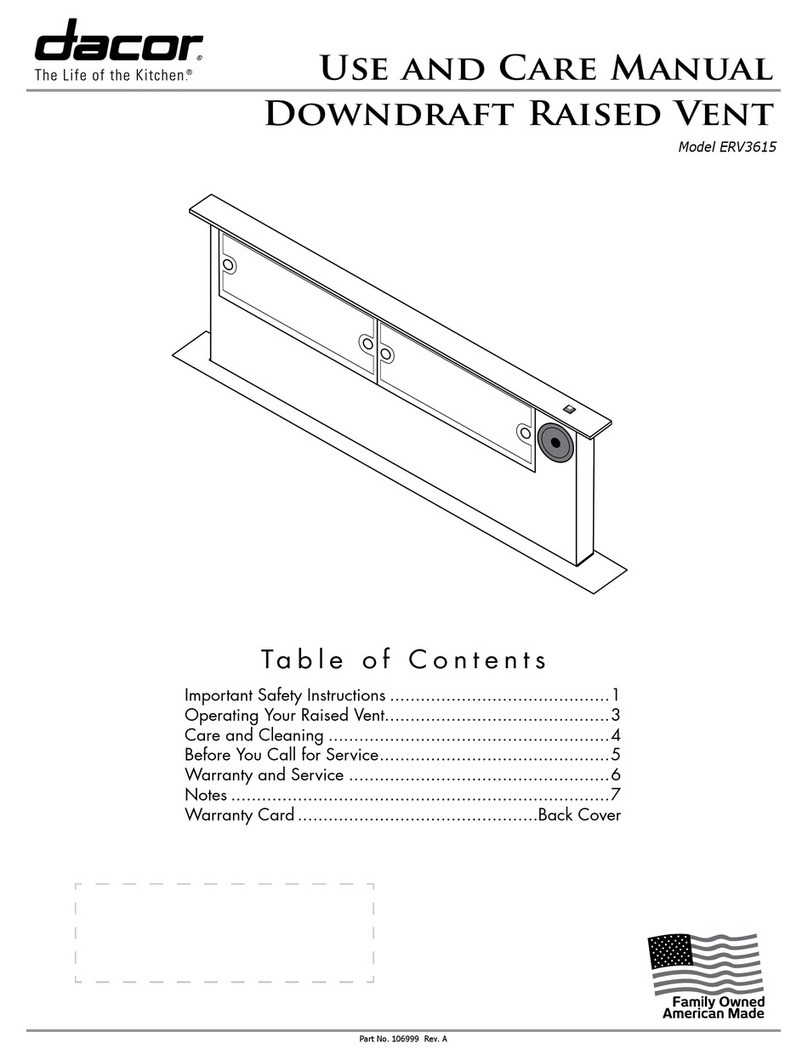
2
Important Safety Instructions
• Do not install or operate this hood if it has been damaged, dropped, has damaged electrical wires or is not working
properly. If the product is damaged when received, immediately contact the dealer or builder.
• This range hood must be installed and grounded by a qualified installer according to these installation instructions.
• Install or locate this appliance only in accordance with these installation instructions and the requirements specified
by the manufacturer of the cooktop or range. Improper installation, adjustment, alteration, service, or maintenance
can cause serious personal injury or property damage.
• The user should not install, repair, or replace any part of the range hood unless specifically recommended in the
literature accompanying it. A qualified service technician should perform all other service. Contact the nearest Dacor
authorized service representative at (800) 793-0093, or at www.dacor.com for examination, repair or adjustment.
• Keep all packaging materials away from children. Plastic bags can cause suffocation.
• Do not use an extension cord or adapter plug with this appliance.
• The installer must show the user the fuse box or circuit breaker panel box and how to turn the power on/off.
• Before installing or servicing the range hood, switch the power OFF at the fuse box circuit breaker and lock the elec-
trical panel door to prevent power from being switched on accidentally. When the electrical panel cannot be locked,
securely fasten a prominent warning device, such as a tag, to the electrical panel.
• Read the Use and Care Manual completely before using the appliance. Clean the appliance only as instructed in the
Use and Care Manual. Use only the cleaners specified.
• Do not tamper with the controls.
• Never allow the filters to become blocked or clogged. Do not allow foreign objects, such as cigarettes or napkins, to
be sucked into the hood.
• Clean the filters, channels, and all grease-laden surfaces often to prevent grease fires and to maintain performance.
• If the cooktop and range hood are near a window, use an appropriate window treatment; Avoid long drapes or win-
dow coverings that could blow over the cooktop and hood and create a fire hazard.
• Always run the fan(s) whenever the cooktop is operating.
• Never leave the range or cooktop unattended when a burner (or element) is in use. Boil-overs and greasy spills may
smoke and/or ignite.
• Do not leave children alone or unattended in the area where the cooktop and range hood are in use. Never allow
children to sit or stand on an appliance. Do not let children play with a range, cooktop, or range hood. Do not store
items of interest to children above or around the cooktop, range, or range hood.
• The minimum vertical distance between the cooktop surface and the exterior part of the hood must be no less
than 30” (76.2 cm). The vertical distance may be longer for the range or cooktop being used. Consult the range or
cooktop Installation Instructions for the minimum and maximum vertical distance from the appliance being used.
• TO REDUCE THE RISK OF FIRE, USE ONLY METAL DUCTWORK.
• PROLONGED POWER FAILURE Do not attempt to use this appliance during a continuous power failure.
WARNING
General Safety Precautions
To reduce the risk of fire, electric shock, serious injury or death when using your appliance, follow basic safety
precautions, including the following:
CAUTION
For general ventilating use only. Do not use to exhaust hazardous or explosive materials and vapors.
